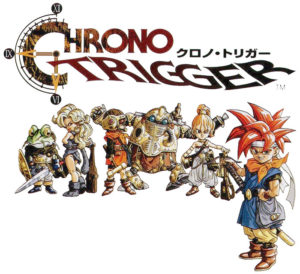
We’re going to take a small departure from tabletop RPGs this week and delve into the world of console games. I used to be a big console gamer. I kept up with the latest news coming out of the industry and it was something I devoted a lot of time to. As I grew older, it became an activity that I engaged in less and less often for a variety of reasons. New releases came fast and furious, hardware upgrades became prohibitively expensive, and other factors came into my life that demanded more of my time. I still have weeks where I can spend some time in front of the television a few days a week, but those are becoming less and less common. Still, they were a strong part of my development as a youth and there are a number of games that I go back to time and again.
 20 some odd years ago my younger brother and I were the proud recipients of a Super Nintendo, which still stands right beside the original Playstation as my favorite gaming console. One day while we were picking up some games at the video store (back when they still existed) for a long weekend off of school I grabbed a copy of a game that looked really cool – Chrono Trigger. I popped it into the console and nothing was ever the same.
20 some odd years ago my younger brother and I were the proud recipients of a Super Nintendo, which still stands right beside the original Playstation as my favorite gaming console. One day while we were picking up some games at the video store (back when they still existed) for a long weekend off of school I grabbed a copy of a game that looked really cool – Chrono Trigger. I popped it into the console and nothing was ever the same.
This game is a very strong contender for the “greatest of all time” (pun intended) in my opinion. Beautiful graphics, intuitive gameplay, an amazing story spanning millions of years, strong characters, and an amazing soundtrack all blended together to create an experience that had an amazingly strong impression on this young gamer. The game has even had lasting impressions on my approaches to game design, which is not something that I can say about many of the video games of my youth.
The story was a fantasy/sci-fi epic that saw you traveling between several different eras of time in order to prevent a near extinction level event that was precipitated when a massively powerful alien parasite known as Lavos fell from the sky in the far past. This alien being burrowed deep into the earth’s core, draining the planet’s energy in order to create its own offspring to eventually send to other planets to continue its life cycle. It grew in power, finally coming to the surface in the year 1999 destroying much of the earth and plunging it into a post-apocalyptic state where humanity was losing hope as they slowly starved.
The time travel was smart. It didn’t try to do anything fancy – it was simple cause and effect. Actions you took in the past would change the future, which lead you to making a string of decisions in different time periods in order to complete various quests throughout the game. These could be as big as going back to an era to find out that a different BBEG had taken over the area that you originally fought through to as small as showing kindness to a family in need of food in the past and having their descendants remember that single act of kindness. The nature of the game also allowed you to visit the “Day of Lavos” at any number of times and start the end game, something that blew my mind. And while you may not have been powerful enough to accomplish defeating him before the end of the game the first time, you could start a new game with everything that you had collected in your first playthrough allowing you to see what defeating Lavos at different points in the changing timeline looked like.
But I think the strongest part of the game (and where the sequel failed so dismally) was the main characters that you controlled through the game.There were a total of seven playable characters in the game. Six of them you recruited through normal game play. The seventh was a major antagonist in the first third of the game that you could choose to recruit or battle again later in the game. They all served a major role in the main story – no character, even the one you could choose not to recruit felt secondary or tangential to the rest of the cast. But most importantly (and something that was hit or miss in some of the other titles of the time and in future games), the characters were not all distinct and different thematically, but also mechanically.
Each party member had a unique set of skills or “Techniques” that they learned as they gained experience that made them suitable to different roles. Some characters were better suited as physical attackers, some as magical attackers, and some were incredibly potent healers. Only three of these party members could be in your active party at any given time, leading you to make decisions about your team. To put a further wrinkle into how you chose your party, each party member was able to “team up” with other party members in order to implement a Double (or even Triple) Technique that was more potent than a single character was capable of performing at the cost of consuming the action of all of the involved characters. For example, a healer might be able to restore the health of a single character. If someone else in the party has an area of effect technique, they might be able to combine those skills to heal the entire party instead of just one person.
These techniques also made you look at enemy placement on the battlefield before you used them. Some might affect every opponent along a single line. Some might affect all opponents in a certain area of effect. Some might affect every opponent regardless of their placement. And some might be useful to dispel or counter enemy abilities despite the actual efficacy. One of the boss battles that takes place near the end of the first third of the game features a boss that stores up energy for a powerful attack, and the main character’s early game technique dispels that energy despite it not being overly effective for the situation. And since enemy placement wasn’t necessarily static, it became something that you needed to monitor. This is commonplace in games now, but at the time, it was something that I was not used to, and it completely blew my mind in how I had to think about encounters.
This game was also the one where I fully understood Squaresoft’s “Active Time Battle” system, which they continued to utilize for years to come. It was a nominally turn-based combat engine, but when it came time for you to input an action for a character, it didn’t stop the enemy from queuing and taking actions of their own. If you weren’t paying attention you could have your plan ruined because you weren’t paying attention and lost a character to KO or other status effect before you could give them their commands.
The lessons this game taught me are still ones that I carry to this day in my own design work – building strong, effective mechanics that still allow you to convey the theme of what you’re trying to do is inextricably linked with memories of this game, and is something I’ve been trying to recapture for years.
Speaking of which, it’s been far too long since my last playthrough. Next stop: The Kingdom of Guardia, 1000 AD.
